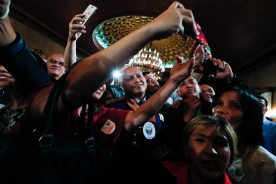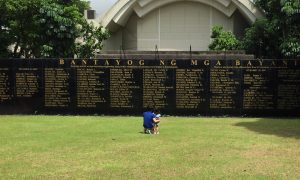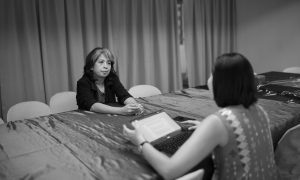The second week of November was met with a number of student movements in the Philippines. It began when a group of students from the Ateneo de Manila University threatened to hold an academic strike to protest the government’s inadequate preparation and response to the series of typhoons that struck the country over the past month, as well as its poor performance in addressing the Covid-19 Pandemic. Garnering more than five hundred signatures as of writing, the students pledged to withdraw all academic submissions until the government acts on their demands. In a matter of days, other universities and student groups showed support for the movement and made their own demands, with some even demanding the oust of President Rodrigo Duterte.
The call for a student strike—and related initiatives—created some division in the student body, faculty and other stakeholders. Certain faculty groups within the universities pledged support for the movement, while some cautioned for moderation. A group of parents calling themselves the League of Parents of the Philippines also staged an indignation rally in front of different universities last November 18 and 19 to protest the proposed academic strike, academic freeze, and even the supposed recruitment of leftist organizations in colleges and universities.
Regardless of one’s view on the issues raised by students, one cannot deny the active role of universities in social organization and social change throughout the history of the Philippines. This was evident in the student protests that erupted in the late 1960s and early 1970s. Less remembered in public memory though is the role of Catholic institutions of higher learning in student activism and nation-building.
Student activism in Philippine Catholic Universities can trace its roots in the 19th century, when the country was still under Spanish rule. Despite the colonial character and perceived conservatism of Catholic educational institutions, some clerics and Spanish colonial officials remarked that these universities were breeding grounds for radical ideas, with one official even proposing closing these higher institutions of learning as early as 1834. Their fears proved valid in the late 1860s and early 1870s when university students joined ranks with secular Filipino priests and other progressive Filipinos who demanded secularisation of parishes and other reforms from Spain. Student activism continued until the execution of the three martyr-priests collectively known as GOMBURZA in 1872. What followed was an era of suppression where universities were subjected to strict censorship and student activism was suppressed.
Despite the censorship, these Catholic institutions still managed to equip many Filipinos with the skills, knowledge and frameworks to question the status quo. Being the most educated colony of Spain, the standard of education in colleges and universities—which were mostly under the friars—was arguably one of the best offered by colonisers of the time as noted by historians such as Resil Mojares and Fr. John Schumacher, S.J. The subjects taught in these universities also allowed students to broaden their perspectives of the world and ask questions that undermined colonial rule. After 1863 for example, subjects included moral philosophy, universal history, logic, philosophy. Many of the ilustrados and revolutionaries also studied in Catholic schools in the Philippines, including the country’s most celebrated hero, Jose Rizal.
Student activism in the Philippines had a resurgence in the late 1960s and 1970s, influenced by the growing student unrest globally, as well as problems at home. The issues raised by student movements ranged from perceived unjust tuition increases, to continuing U.S. imperialism in the country and abroad. The movements became even more pronounced in the first three months of 1970, and exploded in what was to be known as the First Quarter Storm.
Despite disinformation, social media in the Philippines remains a space for genuine grassroots mobilisation
Despite the rise of disinformation innovations, social media still holds genuine democratic potential.
Student activism in Catholic schools and universities was placed on the spotlight again in 2000 and 2001, as many Catholic educational institutions joined strikes calling for the resignation of then President Joseph Estrada. The movement continued until the President was finally forced out of office in January 2001, in what was to become known as EDSA 2. Refusing to recognize the validity of his deposition, Joseph Estrada has repeatedly blamed collusion among certain groups for his ousting, including the Catholic Church and Catholic schools.
All of this is important to remember as educational institutions in the Philippines see the rise of student activism once again. An appreciation of the significant role of student activism in Catholic universities in the area of nation-building may give us a proper framework on how we can better understand and engage these students and their institutions today.
 Facebook
Facebook  Twitter
Twitter  Soundcloud
Soundcloud  Youtube
Youtube  Rss
Rss 



